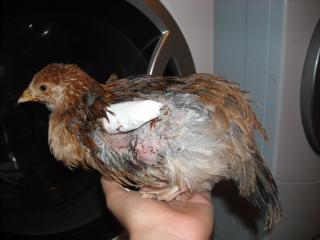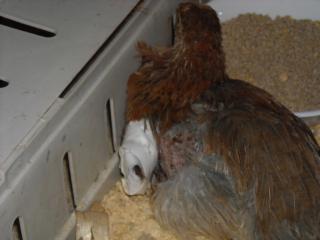- May 19, 2009
- 2,063
- 62
- 173
Shock and infection are your biggest immediate concerns. If germs get a toehold, they will be hard to manage, and then septic shock may set in. Keep her warm and quiet for the present. If she's still prone to bleeding, excitement will just pump the blood out faster. And moniter her for fever (I don't know how to take a chicken's temperature, I'm just a human EMT). I'm sure you were up late, but let us all know how she is when you get up. Hopefully, she's eating and perky, and you can rename her "Eileen"!


